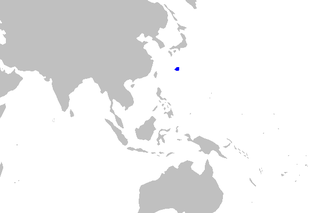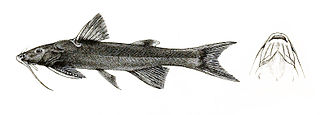
Mahseer is the common name used for the genera Tor, Neolissochilus, Naziritor and Parator in the family Cyprinidae (carps). The name is, however, more often restricted to members of the genus Tor. The range of these fish is from Vietnam in the east and China in the north, through Laos, Cambodia, Thailand, Malaysia, Brunei and Indonesia, and across southern Asia including the countries of India, Nepal, Bhutan and Bangladesh within the Indian Peninsula, plus Sri Lanka, Pakistan and Afghanistan. They are commercially important game fish, as well as highly esteemed food fish. Mahseer fetch high market price, and are potential candidate species for aquaculture. Several of the larger species have suffered severe declines, and are now considered threatened due to pollution, habitat loss, overfishing and increasing concern about the impacts of unregulated release of artificially bred stock of a very limited number of species.

Wobbegong is the common name given to the 12 species of carpet sharks in the family Orectolobidae. They are found in shallow temperate and tropical waters of the western Pacific Ocean and eastern Indian Ocean, chiefly around Australia and Indonesia, although one species occurs as far north as Japan. The word wobbegong is believed to come from an Australian Aboriginal language, meaning "shaggy beard", referring to the growths around the mouth of the shark of the western Pacific.

Danionella is a genus of danionin fish found in freshwater habitats in Myanmar and West Bengal, India. It includes some of the smallest fishes.

River stingrays or freshwater stingrays are Neotropical freshwater fishes of the family Potamotrygonidae in the order Myliobatiformes, one of the four orders of batoids, cartilaginous fishes related to sharks. They are found in rivers in tropical and subtropical South America. A single marine genus, Styracura, of the tropical West Atlantic and East Pacific are also part of Potamotrygonidae. They are generally brownish, greyish or black, often with a mottled, speckled or spotted pattern, have disc widths ranging from 31 to 200 centimetres (1.0–6.6 ft) and venomous tail stingers. River stingrays feed on a wide range of smaller animals and the females give birth to live young. There are more than 35 species in five genera.

Danionella translucida is an extremely small species of cyprinid fish endemic to Myanmar. When described, it was considered to be one of the smallest fish. It was collected from the roots of floating aquatic plants in a slow-flowing, shallow stream in the Pegu Division of Myanmar. It was found alongside Danio, Microrasbora, Erethistes, and Oryzias species. Observed in life, D. translucida is almost perfectly transparent except for its eyes. It has a distinctive pattern of melanophores. There are no melanophores on the dorsal surface except on the head over the posterior part of the brain. On the posterior half of the body, there a few melanophores following the horizontal midline. The sides and underside of the abdomen have melanophores. A double row of melanophores is present on the underside of the fish from the isthmus of the gills to the pelvic fins. Eggs in D. translucida has been found to range in size from about 0.3–0.6 mm (0.012–0.024 in) in diameter, with ripe eggs being at least 0.5 mm (0.020 in) in diameter. Females carried anywhere from 3 to 8 or 10 eggs. Compared to the body of the fish, these eggs are relatively large.

Galeus is a genus of catshark, belonging to the family Scyliorhinidae, commonly known as sawtail catsharks in reference to a distinctive saw-toothed crest of enlarged dermal denticles, found along the upper edges of their caudal fins. They are found in the Atlantic, the western and central Pacific, and the Gulf of California, inhabiting deep waters at or close to the sea floor. Members of this genus are rather small, slim sharks with firm bodies and thick, rough skin. Their heads are usually fairly long and pointed, and have large mouths with well-developed furrows at the corners. They have large pectoral and anal fins, and two similar dorsal fins placed well back. Many species are ornately patterned with dark saddles and/or blotches. Sawtail catsharks feed on various invertebrates and fishes, and may be either egg-laying or live-bearing. These harmless sharks are sometimes caught as bycatch but are of minimal commercial value.

The rasptooth dogfish is a dogfish, found on the Kyushu–Palau Ridge in the northwest Pacific Ocean at depths of 360 m. Its maximum length is unknown. This species was originally described as Centroscyllium sheikoi, and subsequently allocated to the newly named genus Miroscyllium based on anatomical features not shared with other Centroscyllium. More recent molecular data suggest this species belongs to the genus Etmopterus, but as of June 2014 Miroscyllium sheikoi remains the valid name recognized by FishBase, the Catalog of Fishes World Register of Marine Species, and the IUCN

Archocentrus is a genus of cichlid fish from Central America. It currently contains a single species, the flier cichlid, which is found in stagnant and slow-moving freshwater habitats such as lakes, ponds, ditches, swamps and rivers in Honduras, Nicaragua and Costa Rica. It is up to 11 cm (4.3 in) long and feeds on invertebrates and detritus.

The quagga catshark is a species of catshark, belonging to the family Scyliorhinidae. A small, slim-bodied shark reaching 37 cm (15 in) in length, it has a distinctive color pattern of narrow, dark brown vertical bars, which resemble those of the quagga. Its head is short and flattened, with a pointed snout tip that is not upturned.
The Kei goby is a species of goby native to marine and brackish waters along the coasts of Mozambique, South Africa, Madagascar and the Seychelles. This species can reach a length of 7 centimetres (2.8 in) TL.

Uegitglanis zammaranoi is the only species of catfish in the genus Uegitglanis of the family Clariidae. It is endemic to Somalia, where it only occurs in caves near the Jubba and the Shebelle Rivers. This species grows to about 10.1 cm (4.0 in) in total length.

Cavefish or cave fish is a generic term for fresh and brackish water fish adapted to life in caves and other underground habitats. Related terms are subterranean fish, troglomorphic fish, troglobitic fish, stygobitic fish, phreatic fish, and hypogean fish.

Channa marulius, the bullseye snakehead or great snakehead, is a large species of snakehead native to South Asia. Populations in Southeast Asia are now regarded as separate species.
The dracula fish is a species of tropical danionin fish from the cyprinid family. It is a freshwater fish endemic to Myanmar. A close relative is Danio rerio, the zebrafish of aquariums. It is named dracula after its unusual "fangs"; male dracula fish have protruding tooth-like bones stemming from their jawbones. Males have been observed using their fangs to spar with other males.
Bagarius bagarius, also known as the giant devil catfish or goonch, is a species of catfish in the genus Bagarius. It is generally reported as being found in large and medium rivers in South Asia, and is likely synonymous with B. yarrelli.

Bagarius yarrelli, also known as the goonch catfish, giant devil catfish, or simply Goonch, is a very large species of catfish in the genus Bagarius found in rivers in the Indian subcontinent. The species reaches up to 2 m (6.6 ft) in length. It may be synonymous with B. bagarius.
The phallic catshark is a little-known species of catshark, belonging to the family Scyliorhinidae. It is found on or near the ocean floor, in the deep waters off New Caledonia and Vanuatu. A slender species attaining a length of 46 cm (18 in), it is characterized by a long caudal fin bearing a crest of enlarged dermal denticles along the dorsal margin, and very long claspers in adult males. This shark is gray-colored, with four dark saddles along the back and tail.

Glyptothorax conirostris is a species of catfish that was first described by Steindachner, 1867. Glyptothorax conirostris is a species in genus Glyptothorax, family Sisoridae and order Siluriformes. IUCN categorise the species as insufficiently studied globally. No subspecies are listed in Catalogue of Life.
Opsarius ardens is a fish in genus Opsarius of the family Cyprinidae. It is found in Sita and Swarna River systems in the Western Ghats of India.
Danionella mirifica is a species of cyprinid fish. It is endemic to northern Myanmar and only known from its type locality in Myitkyina District. It is a small species, growing to 1.4 cm (0.55 in) standard length.















